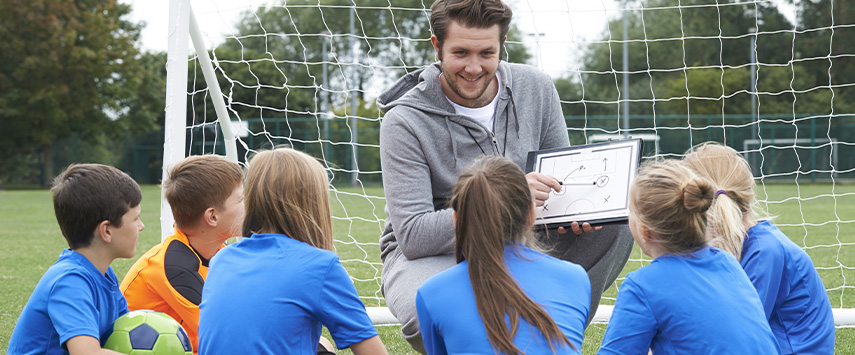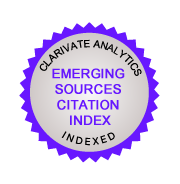Validation of the Teachers' Personal and Professional Skills Questionnaire in the Czech Physical Education Setting
DOI:
https://doi.org/10.7160/eriesj.2025.180107Keywords:
physical activity, physical education, personal skills, professional skillsAbstract
Personal (PSs) and professional (PRs) skills are necessary to any physical education (PE) teacher, potentially having an impact on the quality of teaching and students' engagement in PE. In recent years, the Teachers’ Personal and Professional Skills Questionnaire (TPPS-Q), composed of two 5-item dimensions (PSs and PRs), has been developed and tested. This study aims to test the validity of the TPPS-Q in the Czech school context. The analysis of the questionnaire and its structure, which was based on responses from 135 pupils enrolled in the last grades of Czech primary schools, was performed using the software AMOS for structural equation modeling. Results suggest that the structural model is appropriate after removing two items (CFI = .981; RMSEA = .058; SRMR = .041). Internal validity was good for both PSs (Alpha = .811; Omega = .814) and PRs (Alpha = .795; Omega = .794). Reliability was also found to be good (PSs: ICC = .888; PRs: ICC = .760). Additional scores were assessed for convergent and discriminant validity. The final 8-item version is valid and can be used in the Czech school environment.
References
Ahmad, A. et al. (2021) ‘Organizational learning, soft skills or hard skills: which are more important to reinforce teachers innovation in early childhood education programs’, Psychology and Education Journal, Vol. 58, No. 1, pp. 5052–5076. https://doi.org/10.17762/pae.v58i1.1729
Baumgartner, M. (2022) ‘Professional competence(s) of physical education teachers: terms, traditions, modelling and perspectives’, German Journal of Exercise and Sport Research, Vol. 52, No. 4, pp. 550–557. https://doi.org/10.1007/s12662-022-00840-z
Bobak, C. A., Barr, P. J. and O’Malley, A. J. (2018) ‘Estimation of an inter-rater intra-class correlation coefficient that overcomes common assumption violations in the assessment of health measurement scales’, BMC Medical Research Methodology, Vol. 18, No. 1. https://doi.org/10.1186/s12874-018-0550-6
Brettschneider, W.; Prohl, R.; Breuer, C.; Rittner, V.; Heim, R.; Schmidt, W.; Altenberger, H. (2005) The Sprint-Study, an Investigation on the Situation of School Sports in Germany, Padeborn, Germany: Meyer & Meyer.
Cocca, A., Veulliet, N., Drenowatz, C., Wirnitzer, K., Greier, K. and Ruedl, G. (2023) ‘Assessment of a Novel Instrument Measuring Perceived Physical Education Teachers’ In-Class Skills’, Behavioral Sciences, Vol. 13, No. 1, p. 42. https://doi.org/10.3390/bs13010042
Collier, J. E. (2020) Applied Structural Equation Modeling Using AMOS: Basic to Advanced Techniques. New York, NY: Routledge.
Cortina, J. M. (1993) ‘What Is Coefficient Alpha? An Examination of Theory and Applications’, Journal of Applied Psychology, Vol. 78, No. 1, pp. 98–104. https://doi.org/10.1037/0021-9010.78.1.98
ČŠI – Česká školní inspekce. (2023) Kvalita vzdělávání ve školním roce 2022/2023 – výroční zpráva, [Online], Available: https://www.csicr.cz/CSICR/media/Prilohy/2023_přílohy/Dokumenty/VZ_2023_e-verze_final.pdf
Doraisamy, H. D. and Rahman, A. B. A. (2023) ‘The difference in the skills employment, job training satisfaction and job engagement by training duration among NDTS Apprentices in Southern region of Malaysia’, Multidisciplinary Science Journal, Vol. 5, pp. 2023ss0323. https://doi.org/10.31893/multiscience.2023ss0323
Dytrtová, R. (2018) ‘The personality of the practical teacher and his/her pedagogical training. Pedagogical training of practical teachers’, TTnet Professional Conference Czech Republic.
Fabrigar, L. R., Wegener, D. T., MacCallum, R. C. and Strahan, E. J. (1999) ‘Evaluating the use of exploratory factor analysis in psychological research’, Psychoogical Methods, Vol. 4, No. 3, pp. 272–299. https://doi.org/10.1037/1082-989x.4.3.272
Farahmand, S., Rad, E. M. and Keshmiri, F. (2022) ‘Exploring the effective elements on the personal and professional development among health-care providers: A qualitative study’, Journal of Education and Health Promotion, Vol. 11, No. 1, p. 256. https://doi.org/10.4103/jehp.jehp_1405_21
Fornell, C. and Larcker, D. F. (1981) ‘Evaluating Structural Equation Models with Unobservable Variables and Measurement Error’, Journal of Marketing Research, Vol. 18, No. 1, pp. 39–50. https://doi.org/10.1177/002224378101800104
Gay, G. (2015) ‘The what, why, and how of culturally responsive teaching: International mandates, challenges, and opportunities’, Multicultural Education Review, Vol. 7, No. 3, pp. 123–139. https://doi.org/10.1080/2005615X.2015.1072079
Hair, J. F., Hult, G. T. M., Ringle, C. M. and Sarstedt, M. (2014) A Primer on Partial Least Squares Structural Equation Modelling (PLS-SEM), Los Angeles, CA: SAGE Publications.
Hu, L. T. and Bentler, P. M. (1999) ‘Cutoff criteria for fit indexes in covariance structure analysis: Conventional criteria versus new alternatives’, Structural Equation Modeling, Vol. 6, No. 1, pp. 1–55. https://doi.org/10.1080/10705519909540118
Huang, W. Y. and Wong, S. H. (2014) ‘Cross-Cultural Validation’, in Encyclopedia of Quality of Life and Well-Being Research, Netherlands: Springer.
Chai, S., Kueh, Y. C., Yaacob, N. M. and Kuan, G. (2022) ‘Psychometric properties of the Malay version of the Behavioural Regulation in Exercise Questionnaire (BREQ-3)’, PLoS ONE, Vol. 17, No. 6, p. e0269099. https://doi.org/10.1371/journal.pone.0269099
Martins, J., Marques, A., Rodrigues, A., Sarmento, H., Onofre, M. and Carreiro da Costa, F. (2018) ‘Exploring the perspectives of physically active and inactive adolescents: how does physical education influence their lifestyles?’, Sport, Education and Society, Vol. 23, No. 5, pp. 505–519. https://doi.org/10.1080/13573322.2016.1229290
Mustofa, R. F. and Hidayah, Y. R. (2020) ‘The effect of problem-based learning on lateral thinking skills’, International Journal of Instruction, Vol. 13, No. 1, pp. 463–474. https://doi.org/10.29333/iji.2020.13130a
Nunnally, J. C. and Bernstein, I. H. (1994) Psychometric Theory, 3rd Edition. New York, USA: McGraw-Hill, Inc.
Setiana, S. M., Setiawati, L. and Mustaqim, M. (2019) ‘Hard skills versus soft skills: How do they affect different job types of Japanese language graduates?’, International Journal of Learning, Teaching and Educational Research, Vol. 18, No. 11, pp. 176–192. https://doi.org/10.26803/ijlter.18.11.10
Shrestha, N. (2020) ‘Detecting Multicollinearity in Regression Analysis’, American Journal of Applied Mathematics and Statistics, Vol. 8, No. 2, pp. 39–42. https://doi.org/10.12691/ajams-8-2-1
Spittle, M., Petering, F., Kremer, P. and Spittle, S. (2012) ‘Stereotypes and self-perceptions of physical education pre-service teachers’, Australian Journal of Teacher Education, Vol. 37, No. 1, pp. 18–42. https://doi.org/10.14221/ajte.2012v37n1.5
Staffini, A., Fujita, K., Svensson, A. K., Chung, U.-I. and Svensson, T. (2022) ‘Statistical Methods for Item Reduction in a Representative Lifestyle Questionnaire: Pilot Questionnaire Study’, Interactive Journal of Medical Research, Vol. 11, No. 1, p. e28692. https://doi.org/10.2196/28692
State administration. (2024) Gymnasium is the best preparation for further studies, [Online], Available: https://statni-sprava.inform.cz/vzdelavani/gymnazium-je-nejlepsi-priprava-k-dalsimu-studiu/
Yanova, M. G., Yanov, V. V., Kravchenko, S. V. and Vetrova, I. V. (2021) ‘Professional competences of physical education teachers: Structural and component analysis’, Journal of Siberian Federal University - Humanities and Social Sciences, Vol. 15, No. 4, pp. 554–558. https://doi.org/10.17516/1997-1370-0477
Additional Files
Published
How to Cite
Issue
Section
License
Copyright (c) 2025 Armando Cocca, Marcela Ciesralová, Michaela Cocca, Klaus Greier, Jaroslav Uchytil, Gerhard Ruedl

This work is licensed under a Creative Commons Attribution 4.0 International License.
Authors declare with this manuscript intended for publication to ERIES Journal that:
- all co-authors agree with the publication of the manuscript even after amendments arising from peer review;
- all co-authors agree with the posting of the full text of this work on the web page of ERIES Journal and to the inclusion of references in databases accessible on the internet;
- no results of other researchers were used in the submitted manuscript without their consent, proper citation, or acknowledgement of their cooperation or material provided;
- the results (or any part of them) used in the manuscript have not been sent for publication to any other journal nor have they already been published (or if so, that the relevant works are cited in this manuscript);
- submission of the manuscript for publication was completed in accordance with the publishing regulations pertaining to place of work;
- experiments performed comply with current laws and written consent of the Scientific Ethics Committee / National Animal Care Authority (as is mentioned in the manuscript submitted);
- grant holders confirm that they have been informed of the submitted manuscript and they agree to its publication.
Authors retain copyright and grant ERIES Journal right of first publication with the work simultaneously licensed under a Creative Commons Attribution License that allows others to share the published work with an acknowledgement of its initial publication in ERIES Journal. Moreover, authors are able to post the published work in an institutional repository with an acknowledgement of its initial publication in ERIES Journal. In addition, authors are permitted and encouraged to post the published work online (e.g. institutional repositories or on their website) as it can lead to productive exchanges, as well as earlier and greater citation of published work.






